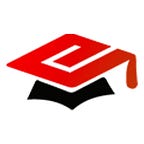Technology-based and skill-based learning approaches have a long history and are a growing trend as regions and regions try to adapt assessment programs to be more flexible and harmonious. Here is a practical explanation of these types of methods:
- Students’ progress in managing content and concepts rather than based on credits, class time, or age.
- Skills include clear, measurable, and transferable learning objectives that empower learners
- Assessment is meaningful and has a great learning experience for students
Students receive timely, differentiated support according to their individual learning needs. Learning outcomes emphasize skills that include the use and construction of knowledge, as well as the development of important skills and practices.
As schools work to achieve equitable outcomes for all students, the movement to adopt technological approaches to teaching, learning, and graduation has gained momentum as the courage for change. By focusing on technology-based activities, such as prioritizing the most important knowledge and skills, providing a solid and inclusive learning experience aligned with clear outcomes, and ensuring that all students have access and support to access skills, graduate schools better suited for college, work, and community life.
Beliefs are inseparable from the workplace, and both are important in implementing efficient and equitable systems that support technology. These practices identify key activities to support expertise, but without these basic beliefs, practices alone will not create equal results for all students.
Technology-based education is often seen as one of the most common forms of education where students may or may not be proficient in a given subject or course before getting a loan, promotion, or graduation. For example, high school students tend to get academic credit over tuition, but the pass rate can be either A or D, suggesting that the credit score is based on what is expected of learning — with some students studying more and others studying less — rather than applying the same values for all. And because marks can be calculated differently from school to school or teacher to teacher, and may be based on different learning expectations (i.e., some subjects may be “difficult” and some “easy”), students may pass their studies, earning the required number of credits, and receive a diploma without gaining the necessary knowledge and skills. In extreme cases, for example, students may be offered a high school diploma but may not be able to read, write, or do maths at a basic level. A “technology-based” diploma can be a diploma offered only to students after meeting the required learning standards.
While the goal of quality learning is to ensure that more learners learn what they are expected to learn, this approach can provide teachers with detailed or clear information about students’ learning progress, which can help them more accurately identify academic strengths and weaknesses, as well as specific concepts and skills. As educational progress is often tracked and reported through levels of learning in technology and schools, teachers and parents often know exactly what specific knowledge and skills students have acquired or may be struggling with. For example, instead of getting a book grade in an assignment or an exam, each of which can deal with different levels, students are listed for certain levels of reading, each describing the knowledge and skills students are expected to gain.
The High School Partnership continues to produce good resources to support provinces and districts that are transforming into skills education. They have taken away from what the regions of New England are doing and created Learning Simplified technology-enabled resources. They are a great resource for provinces, districts, and schools to start a discussion about new policies and practices that need to be put in place. We know we’re on the move, and that’s creative, so don’t be surprised if you find that you want to take these ideas forward or that you come up with other ways to deal with policy and action elements. No matter what, these resources will save you time starting and organizing the dialogue needed to build clarity and consistency.
6 Principles of Quality Education
- All learning expectations are clearly and consistently conveyed to students and families, including long-term expectations (such as graduation requirements and graduation rates), short-term expectations (such as learning objectives for a particular subject), and general expectations (such as performance standards used in the school’s grading and reporting system).
- Student achievement is assessed in accordance with standard learning standards and performance expectations that consistently apply to all students, regardless of whether they are enrolled in traditional studies, pursuing alternative studies, or receiving academic support.
- All forms of assessment are based on standards and objectives, and success is defined by the achievement of expected standards, not limited performance measures or student-student comparisons.
- Constructive assessment assesses learning progress during the teaching process and is not designed; constructive assessment data is used to inform instructional correction, practices, and support.
- Collected tests evaluate learning success and are calculated; aggregate assessment statistics record a student’s level of proficiency at a given time.
- Grades used to communicate the learning and achievement of learners and families; marks are not used as punk methods.
You can visit Coding, AI, ML, IoT, programming, AR/VR, Blockchain, and Robotics classes for kids here.
